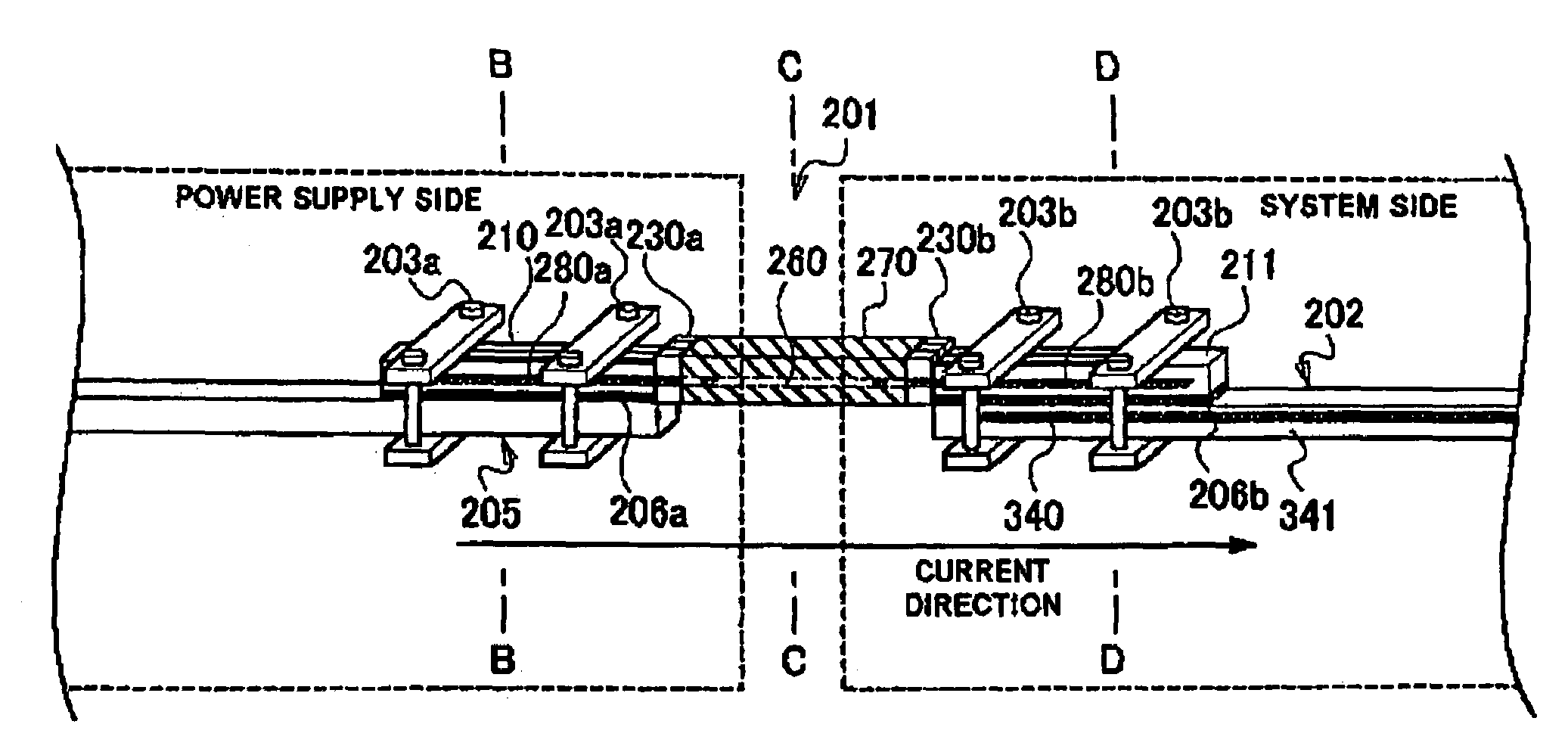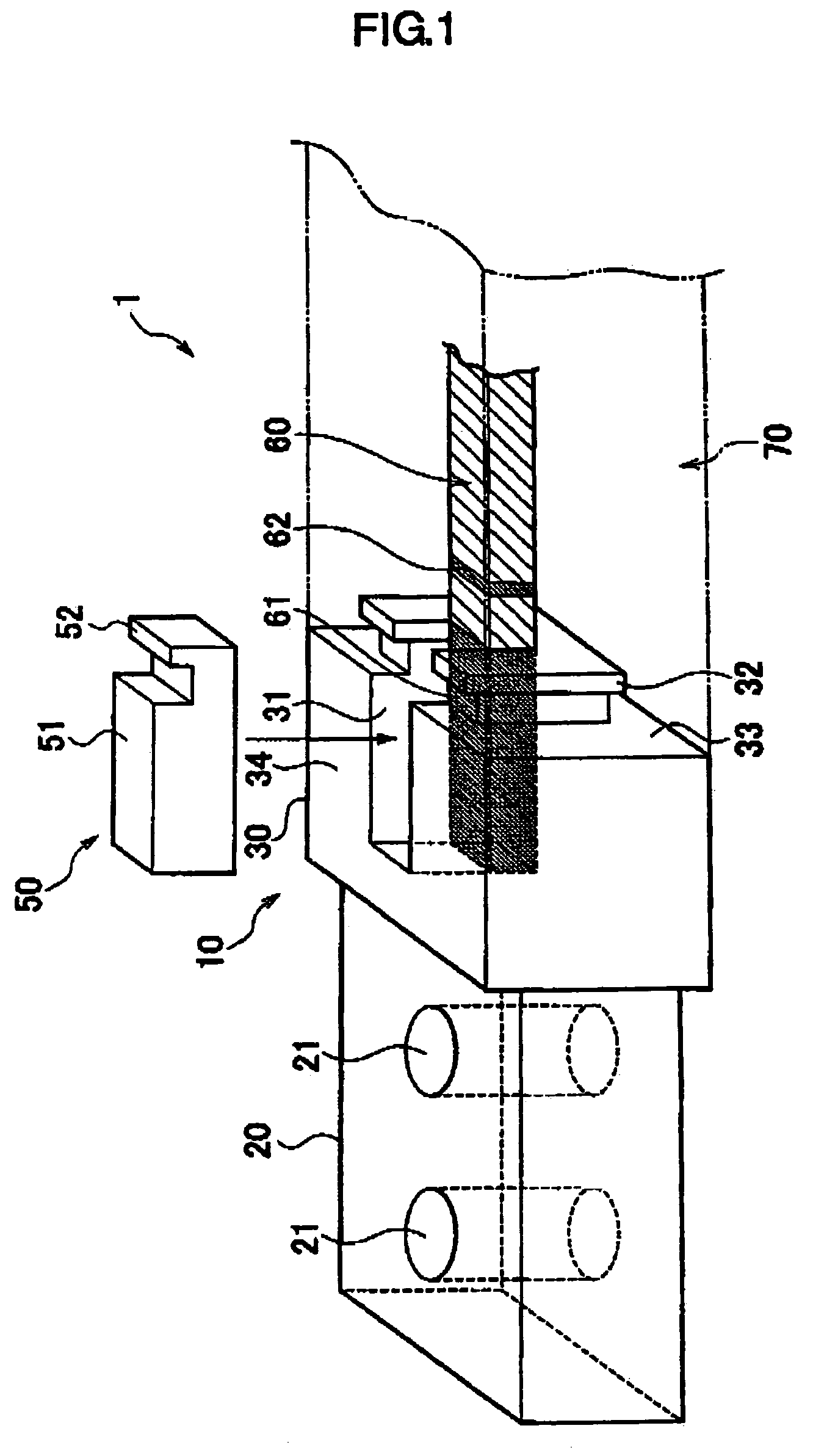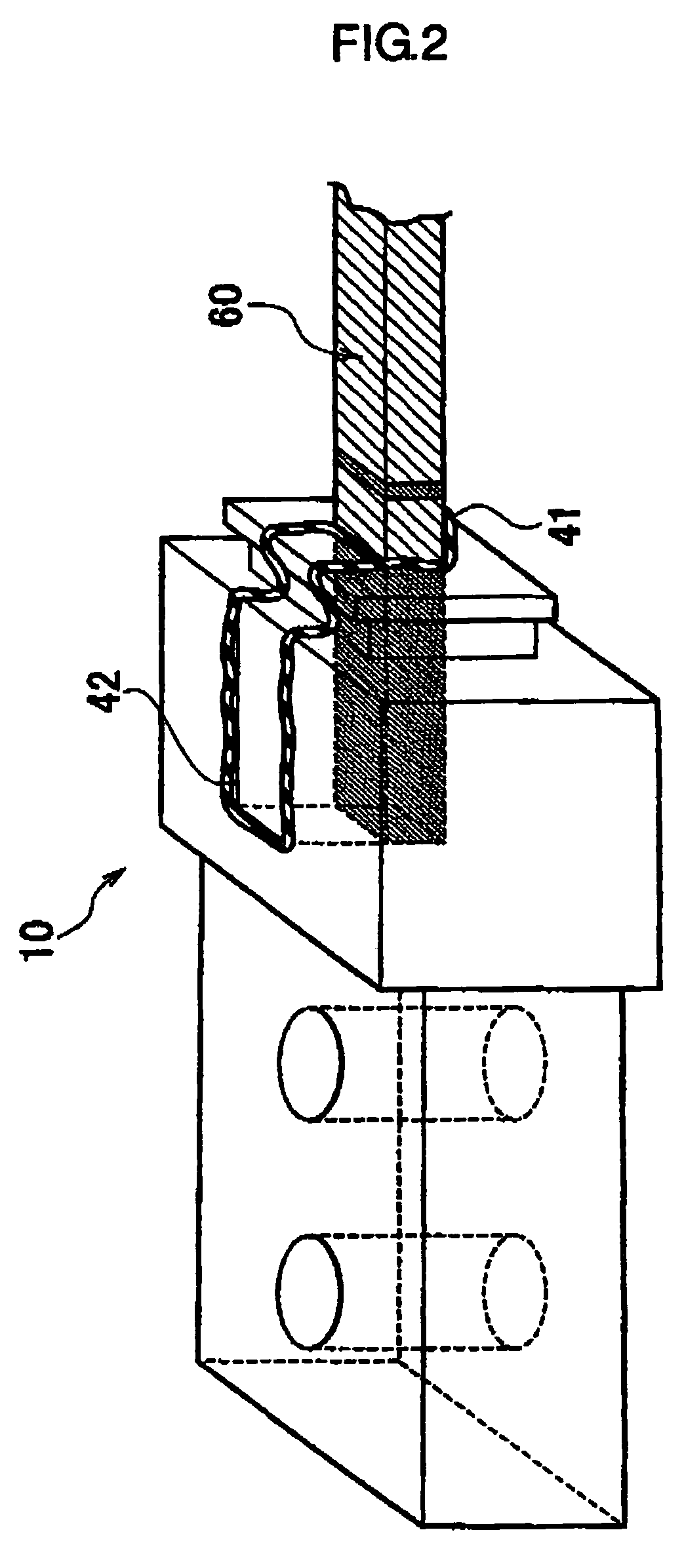Oxide superconductor current lead and method of manufacturing the same, and superconducting system
- Summary
- Abstract
- Description
- Claims
- Application Information
AI Technical Summary
Benefits of technology
Problems solved by technology
Method used
Image
Examples
first embodiment
[0080]The first embodiment of the present invention will be explained with reference to the drawings hereinafter.
[0081]FIG. 1 is a perspective view showing a placement example of an oxide superconductor to a metallic electrode in an oxide superconductor current lead according to the present invention, FIG. 2 is a perspective view in a case in which a sealing member is provided at the metallic electrode in which the oxide superconductor shown in FIG. 1 is placed, FIG. 3 is a conceptual diagram of measurement of characteristics of an oxide superconductor current lead according to the present invention, FIG. 4 is a perspective view when the aforesaid joined body is housed in a mold to coat the joined body of the oxide superconductor and the metallic electrodes with a coating member, and FIG. 5 is a schematic cross sectional view of a joint portion of the oxide superconductor and the metallic electrode in an oxide superconductor current lead made by a prior art.
[0082]In FIG. 1, an oxide...
example 3
[0176]1) Production of the Columnar Oxide Superconductor
[0177]Each raw material powder of Sm2O3, BaCO3, and CuO was weighed so that Sm:Ba:Cu=1:2:3 in the mole ratio and mixed, then calcined at 920° C. for 30 hours, thereafter ground into the average grain size of 3 μm with use of the pot mill, and calcined again at 930° C. for 30 hours and ground into the average grain size of 10 μm in the mixing and grinding machine, and the pot mill, whereby the powder of Sm1Ba2Cu3O7−x that was the first calcined powder was prepared.
[0178]Next, the aforesaid each raw material powder was weighed so that Sm:Ba:Cu=2:1:1 and mixed, then calcined at 890° C. for 20 hours, and ground into the average grain size of 0.7 μm with use of the pot mill, whereby the powder of Sm2BaCuO5, which was the second calcined powder, was prepared.
[0179]The first and the second calcined powders were weighed so that Sm1Ba2Cu3O7−x Sm2BaCuO5=1:0.4, and Pt powder (average grain size 0.01 μm) and Ag2O powder (average grain size...
example 4
[0201]The oxide superconductor current lead sample was produced similarly to the example 1 except for that the temperature of 6) the degassing treatment of the joining metal in the example 1 was set at 160° C.
[0202]When the contact resistance values of the joint portions of the metallic electrodes and the oxide superconductor at the both sides of the current lead sample were calculated as in the example 1, it was revealed that the one was 0.3 μΩ, and the other was 0.27 μΩ, which were very low values.
[0203]When the current lead sample was further cooled to 4.2 K, and the contact resistance values between the metallic electrodes and the oxide superconductor were calculated, it was revealed that the contact resistance values at the both sides were 0.05 μΩ, which was a very low value.
[0204]Meanwhile, the critical current value and the penetrating heat at 77 K in the magnetic field of 0.5 T were substantially at the same levels as in the example 1.
[0205]From the above, it was revealed th...
PUM
| Property | Measurement | Unit |
|---|---|---|
| Fraction | aaaaa | aaaaa |
| Electrical resistance | aaaaa | aaaaa |
| Current | aaaaa | aaaaa |
Abstract
Description
Claims
Application Information
 Login to View More
Login to View More - R&D
- Intellectual Property
- Life Sciences
- Materials
- Tech Scout
- Unparalleled Data Quality
- Higher Quality Content
- 60% Fewer Hallucinations
Browse by: Latest US Patents, China's latest patents, Technical Efficacy Thesaurus, Application Domain, Technology Topic, Popular Technical Reports.
© 2025 PatSnap. All rights reserved.Legal|Privacy policy|Modern Slavery Act Transparency Statement|Sitemap|About US| Contact US: help@patsnap.com



